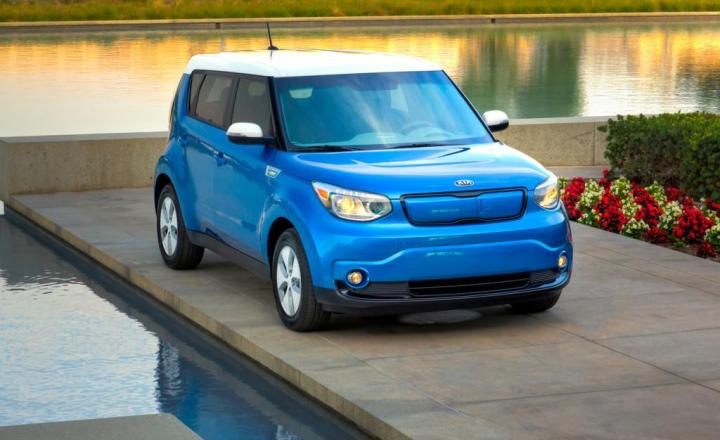
Most notably, Kia revealed a new entry-level version dubbed the EV-e that starts at $31,950 ($2,000 cheaper than the 2015 Soul EV base model) and includes push-button ignition, heated front seats, a heated steering wheel, Bluetooth connectivity, a multi-function steering wheel, and a six-speaker audio system. Including the $7,500 federal tax credit, the 2016 model will cost $24,450.
At the top of the Soul EV range is the Soul EV+ with a new “Sun & Fun Package” consisting of a panoramic sunroof, LED interior lighting, and speaker lights that pulse to the beats of the music. All 2016 Soul EVs will also get a charge-port nozzle lock — a critical piece of equipment — an illuminated AUX/USB port, and two new exterior colors: Bright Silver and Shadow Black.
Unchanged is the Soul EV’s powertrain: a 27kWh lithium-ion battery-powered electric motor making 109 horsepower and 210 pound-feet of torque. The range is still 90 miles on a single change, zero-to-60 mph takes 11.2 seconds, and top speed stands at 90 mph. You won’t be winning any drag races, basically.
The 2016 Kia Soul EV’s closest rivals include the Chevrolet Spark EV, Fiat 500e, Honda Fit EV, Ford Focus Electric, Mitsubishi i-MiEV, Nissan Leaf, and Volkswagen E-Golf. The Soul EV’s 90-mile range falls somewhere in the middle of the competition, and its new, lower starting price and attractive shape could draw new buyers to the Kia brand.
Editors' Recommendations
- Kia EV3: Release date, performance, range, and more
- Kia EV4: design, rumored pricing, release date, and more
- Kia EV6 GT first-drive review: putting a little more fun into EVs
- Dell unveils a new XPS 13, and it’s now way more powerful
- Next-generation Kia Soul EV’s U.S. launch pushed back until 2021


